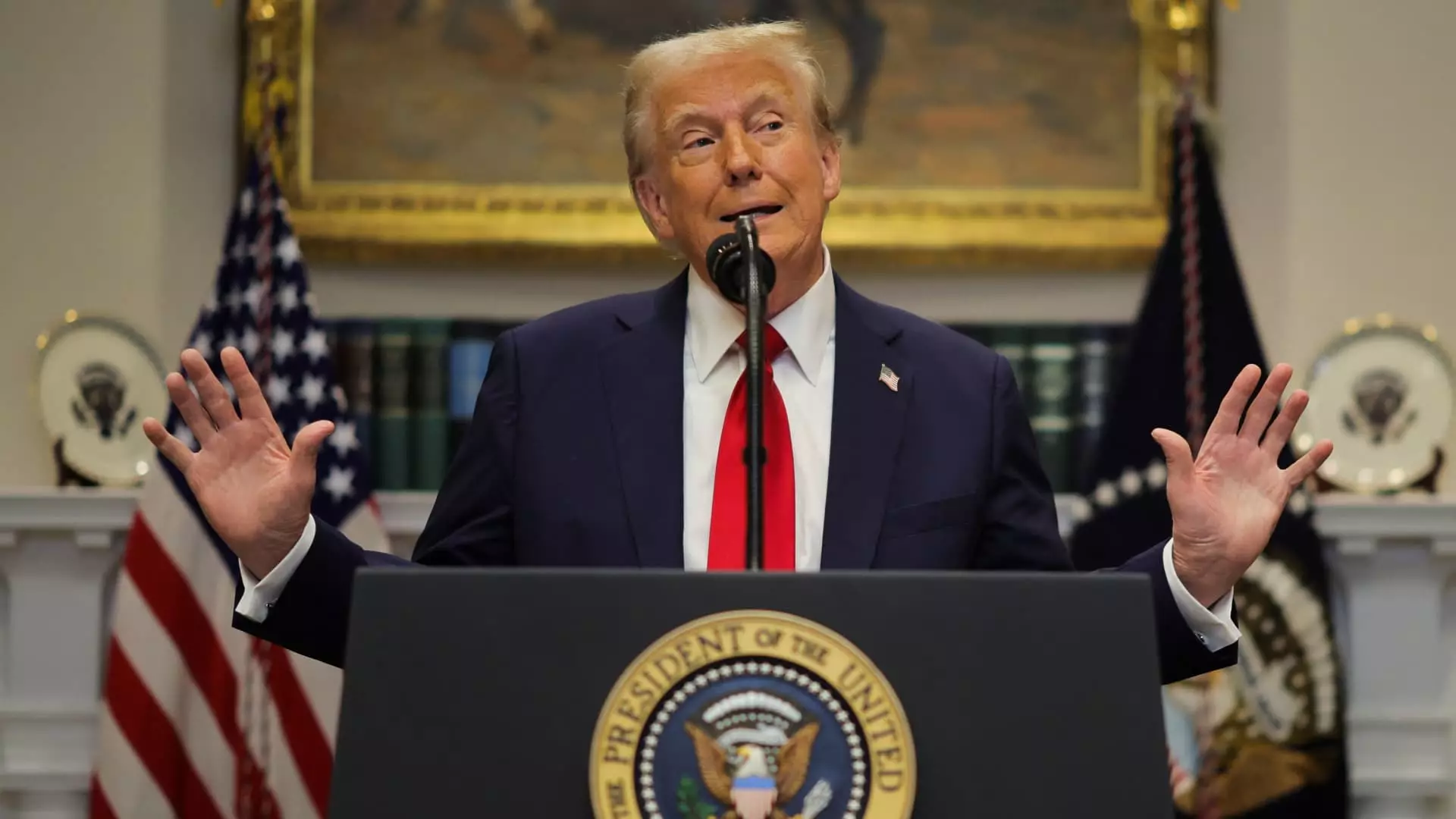Trade relations between the United States and China have long been a focal point of economic policy discussions, particularly due to the impact of tariffs and restrictions imposed by both nations. Recently, former President Donald Trump discussed the potential implementation of a 10% tariff on Chinese imports, citing concerns related to the distribution of fentanyl across North America. This proposed tariff has stirred debate, reflecting the intricate balance between economic strategy, public health issues, and international relations.
The rationale behind Trump’s proposed tariff revolves around the ongoing fentanyl crisis gripping the United States, where synthetic opioids have contributed to a staggering number of overdose deaths. By highlighting that fentanyl precursors predominantly originate from China and ultimately contribute to the crisis in the U.S. through Mexican trafficking routes, Trump positions the tariffs as part of a broader strategy to combat drug imports. While the intention may aim to address a critical public health issue, it raises concerns about the collateral damage such trade barriers could impose on the economies and relations between the countries involved.
China’s response to Trump’s comments has been measured yet pointed. Xi Jinping’s administration emphasizes the importance of cooperation and the mutual benefits of economic ties, suggesting that unilateral tariffs could exacerbate tensions rather than foster productive dialogue. The nuanced readout from Chinese officials indicates a willingness to address common challenges but warns against the backdrop of a trade war, which they assert can yield no winners. This viewpoint underscores the complexities of negotiating trade agreements in a landscape where both nations hold distinct economic aspirations and priorities.
In the wake of Trump’s tariff discussions, market reactions have been mixed. The offshore Chinese yuan initially appreciated, signaling a momentary relief in response to diplomatic overtures but has since weakened amid escalating concerns over heightened tariffs. The potential for increased tariffs could lead to ripples in both economies, affecting everything from currency valuation to consumer prices. According to analyses from organizations like the Peterson Institute for International Economics, the imposition of even a 10% tariff could result in significant GDP reductions for both nations over a four-year period, highlighting the far-reaching implications of these economic policies.
Historically, U.S.-China trade relations have been characterized by oscillation between cooperation and conflict. Trump’s previous administration marked a significant departure from prior approaches, as tariffs were elevated in an effort to demand concessions from China regarding trade imbalances and intellectual property theft. The corresponding retaliatory measures from China further complicated the economic landscape, revealing a tit-for-tat dynamic that remains central to their interactions. Past attempts to increase U.S. imports from China while addressing long-standing grievances allowed for a temporary truce, yet the recent discussions reveal that the underlying tensions remain unresolved.
Looking forward, the implications of Trump’s proposed tariffs on both China and its neighbors, Mexico and Canada, warrant careful consideration. The idea of applying up to 25% tariffs on North American counterparts, framed through immigration and border security critiques, intertwines trade with national policy issues that extend beyond economic concepts. The prospect of such high tariffs raises questions about the feasibility of multi-nation trade agreements and their broader repercussions on domestic economic stability.
Ultimately, as economic globalization faces increasing scrutiny, the path forward lies in balancing the immediate interests against long-term relationships and the broader goal of stability in international trade. The potential risks involved in escalating tariff disputes could spiral out of control, leading to greater economic isolation rather than mutual cooperation. In navigating this complex landscape, stakeholders must prioritize dialogue and strategic collaboration to achieve equitable and sustainable outcomes for all parties involved.


Leave a Reply